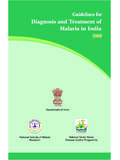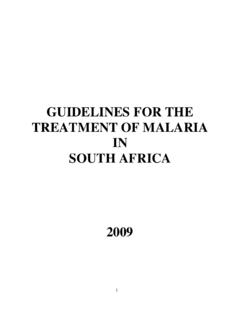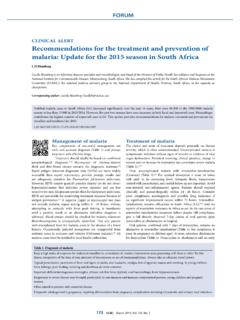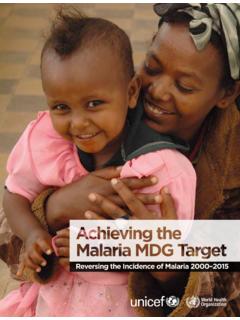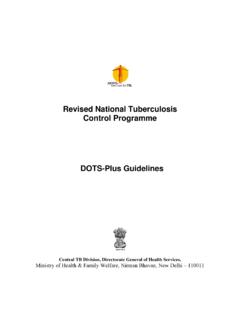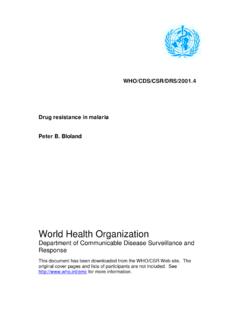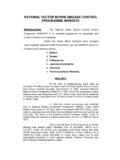Transcription of NTLP MANUAL 2006 -final - WHO
1 THE UNITED REPUBLIC OF TANZANIA MINISTRY OF HEALTH AND SOCIAL WELFARE M A N U A L OF THE national TUBERCULOSIS AND LEPROSY PROGRAMME IN TANZANIA FIFTH EDITION 2006 iTABLE OF CONTENTS List of Figures .. iii List of Tables .. iii FOREWORD .. vi ACKNOWLEDGEMENT .. viii ABBREVIATIONS .. ix BACKGROUND .. 1 Vision and mission .. 3 Objectives .. 3 Organisational Structure of the ntlp .. 3 1. TUBERCULOSIS .. 6 General information about tuberculosis .. 6 The Burden of Tuberculosis in Tanzania .. 7 The Diagnosis of Tuberculosis .. 9 The diagnosis of pulmonary tuberculosis in adults .. 10 The Diagnosis of Tuberculosis in Children .. 19 Disease Classification .. 21 Case Definition .. 21 Documentation on Diagnosis: .. 22 Patient Education .. 23 Treatment of Tuberculosis .. 24 Basic principles of TB control .. 24 TB treatment categories .. 29 TB treatment regimens .. 30 Combined treatment of TB and HIV .. 38 Preventive Treatment.
2 40 Side effects of treatment .. 41 Treatment Monitoring .. 43 Other important principles in Tuberculosis control .. 46 2. TUBERCULOSIS AND HIV .. 51 HIV Testing Policy in TB Patients .. 52 TB Screening among PLHA .. 55 Provision of Isoniazid Preventive Therapy (IPT) .. 55 Measures to decrease the burden of HIV in TB patients .. 57 3. LEPROSY .. 60 General Information about Leprosy .. 60 Situation of Leprosy in Tanzania .. 60 Leprosy control activities .. 62 The Diagnosis of Leprosy .. 63 Assess the extent of disease .. 67 Classification of leprosy .. 71 Case Definitions .. 72 Differential diagnosis of leprosy .. 73 Recording and Reporting of Leprosy .. 74 Health Education .. 75 Treatment of Leprosy .. 76 Basic principles of leprosy treatment .. 76 Treatment Regimens .. 77 Side effects of MDT drugs .. 79 Treatment in special cases .. 80 Monitoring of Treatment .. 80 Recording and Reporting .. 82 Leprosy Reaction.
3 83 Reversal Reaction (RR) or type I reaction .. 84 Erythema Nodosum Leprosum (ENL) or type II reaction .. 88 Responsibilities of health workers regarding treatment of reactions .. 91 Relapse After MDT .. 91 Prevention of Disabilities (PoD) .. 95 First level prevention .. 95 Second level prevention .. 95 Third level of prevention of disability .. 101 Rehabilitation .. 102 Recording, registration and reporting of POD activities .. 102 4. APPENDICES .. 104 District management of ntlp activities .. 104 Supervision: .. 105 Job descriptions .. 106 Documentation .. 114 ntlp codes for regions and districts .. 118 ntlp records, registers and forms .. 121 INDEX .. 121 iii List of Figures Figure 1: Organogram of the national Tuberculosis/Leprosy Programme. Figure 2: Trend of TB cases notification from 1991 to 2004 in Tanzania Figure 3: Distribution of TB cases notified in year 2004 Figure 4: Tuberculosis notification rate (smear positive) per 100,000 population by region in 2004 Figure 5: Flowchart on the diagnosis of pulmonary tuberculosis in adults Figure 6: Leprosy rates 1983 2004 in Tanzania Figure 7: Leprosy prevalence rate per 10,000 population in Tanzania.
4 2003 Figure 8: Places where superficial nerve trucks can be palpated Figure 9: Hands and Feets sensation testing Figure 10: Signs of active disease after RFT, what to do List of Tables Table 1: Reporting of smear results Table 2: Score chart for diagnosis of tuberculosis in children Table 3: Severe and less severe extra-pulmonary TB cases Table 4: Mode of action, potency and recommended dose of anti TB drugs Table 5: Dose-bodyweight relation for patients treated with category I treatment regimen Table 6: Dose-bodyweight relation for patients treated with category II treatment regimen Table 7: Dose-bodyweight relation for patients treated with category III treatment regimen Table 8: Case definition and treatment of patients with second episode of active TB Table 9: Dose-bodyweight relation for children treated with category I and III treatment regimen Table 10: Side effect of drugs Table 11: Re-introduction of TB drugs following a drug reaction Table 12: Pulmonary PTB difference in early and late HIV infection Table 13: Important aspect to be discussed during pre-test Counseling sessions Table 14.
5 Strategies to exclude active tuberculosis before initiating IPT Table 15: Contrimoxazole Prophylaxis for HIV-exposed Child Table 16: Special Consideration of ART in TB and HIV CO-infected patients Table 17: WHO disability grading Table 18: Possible side effect of leprosy drugs Table 19: Standard treatment with predinisolone of severe RR in MB and PB patients Table 20: Hospital treatment with prednisolone of severe RR in MB and PB patients Table 21: The standard treatment schedule of prednisolone ivTable 22: Treatment of recurrent ENL Table 23: Difference between RR reaction and relapse Table 24: Referral hospitals for leprosy patients v viFOREWORD The publication of the fifth edition of the national Tuberculosis and Leprosy Programme ntlp ) MANUAL marks a big step forward because it underscores the programme s commitment to providing the latest knowledge and developments in TB and leprosy control in Tanzania. The MANUAL puts emphasis on integrating TB and leprosy control within the health system and extensively revised interventions to control TB in the context of HIV pandemic inline with the Interim policy developed by WHO and other partners Tuberculosis is a major cause of morbidity and mortality in Tanzania especially among adults after HIV/AIDS and malaria.
6 The incidence of tuberculosis has increased dramatically in the last two decades driven by the spread of HIV infection. In 2004 alone over 65,600 new TB cases were notified compared to only 11,000 in 1984. This six fold increase has dramatically increased the workload of health care providers and overstretched the existing health systems. Data from national Sentinel Surveillance system of the Adult Morbidity and Mortality Project (AMMP-2001) indicates that TB/HIV conditions contribute to of the total disease burden in Tanzania for population above 5 years of age, behind AIDS ( ) and perinatal conditions ( ). Many of those affected are in the productive age group, which affects negatively growth of the national economy due to absenteeism and reduced productivity. Thus control of TB will also contribute positively to the growth of national economy and to the reduction of poverty under the national Strategy for Growth and Reduction of Poverty (NSGPR).
7 A strong contol programme will also help reduce the prevalence of the TB and leprosy in line with WHO goals and Millenium Development Goals (MDGs). Tanzania is also in the process of eliminating Leprosy as a public health problem. The country has recorded a dramatic reduction of leprosy cases in the last 20 years from more than 35,000 cases in 1983 to about 4,000 in 2004. Strengthening community-based leprosy elimination campaigns and integration of leprosy care in all health facilities will ensure sustainaibility of the success achieved in eliminating the disease. This new MANUAL provides extensive information on leprosy control appropriate for all levels of health care providers. Special emphasis is put on prevention of disabilities, care and rehabilitation of disabled people affected by leprosy in order to reduce stigma and improve the quality of life. It is therefore paramount that ntlp and the health sector in general strengthens its efforts in the control of TB and leprosy to reduce the unnecessary suffering and loss of life especially among the young people.
8 As we strengthen our control efforts, emphasis should be focused on quality of services rendered to ensure that we do not generate multi-drug resistant TB. Both diseases are targeted for control in the Essential Health Package which means every district will incorporate them in their comprehensive council health plans. This new revised MANUAL will help the service providers and all those interested in TB control to achieve the desired results. viiThe Ministry of Health and Social Welfare and the Government is committed to intensifying its efforts to prevent and control these two diseases in collaboration with development partners and other stakeholders. I take this opportunity to express my sincere appreciation to all of them for their continuing financial and technical support. It is my sincere hope that all health workers will find this MANUAL useful in their daily work. What remains is for all to renew the spirit of commitment and dedication to improve the quality of services rendered to our people.
9 Prof. David H. Mwakyusa (MP) Minister for Health and Social Welfare 2006 viiiACKNOWLEDGEMENT This fifth edition of the national Tuberculosis and Leprosy Programme ( ntlp ) MANUAL was completed after extensive and prolonged consultations with different partners and stakeholders. I take this opportunity to thank all those who selflessly and freely gave comments on the various drafts we shared with them. Special thanks goes to the staff of ntlp particularly those working at the central level for initiating and coordinating the whole process of reviewing available information and drafting a new version of the MANUAL . Specifically, I would like to recognise contributions from M. Egwaga, Dr Njako, Dr. E. Wandwalo, Dr. Kamara, Dr. F. Lwilla and Mr Chonde together with staff from the national AIDS Control Programme (NACP) and other staff members in the Ministry of Health and Social Welfare.
10 This document would not have been completed without the valuable contributions from the consultants to the programme especially Dr. R. L Herminez (KNCV), Dr. A. Reid (WHO Geneva), Dr. Armand van Deun (Institute of Tropical Medicine, Belgium) and Penny Grewal from Novartis Foundation for Development. There many others who provided invaluable input to this document. To them all I say thank you. Finally, I would like to thank the regional and district TB/Leprosy coordinators for their practical contributions based on field experience. Dr. G. L. Upunda Chief Medical Officer Ministry of Health and Social Welfare 2006 ixABBREVIATIONS AFB - Acid Fast Bacilli AIDS - Acquired Immuno-Deficiency Syndrome ARC - AIDS Related Complex ART - Anti-Retroviral Therapy ARTI - Annual Risk of Tuberculosis Infection BCG - Bacille Calmette-Guerin CBHC - Community Based Health Care CTC - Care and Treatment Centre CTRL - Central Tuberculosis Reference Laboratory CHMT - Council Health Management Team DCT - Diagnostic Counselling and Testing DMO - District Medical Officer DOT - Directly Observed Treatment DOTS - Directly Observed Treatment, Short course DRA - DOT and Rifampicin Accounting register DTLC - District Tuberculosis and Leprosy Co-ordinator E - Ethambutol ENL - Erythema Nodosum Leprosum EP - Extra-pulmonary ETR - Electronic TB Register EQA - External Quality Assurance of AFB microscopy.










